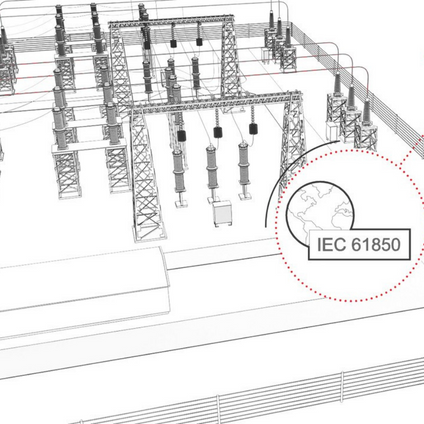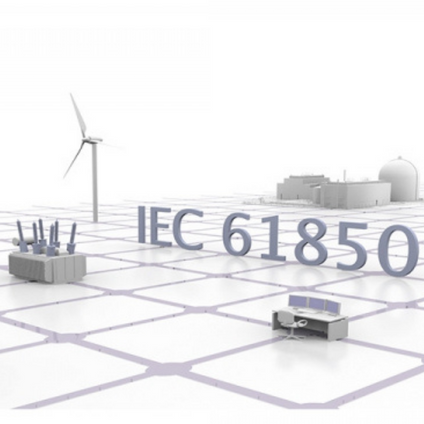IEC 61850: Revolutionizing Substation Communication and the Future of Grid Connectivity

IEC 61850: Revolutionizing Substation Communication and the Future of Grid Connectivity
In this article, we will delve into IEC 61850, an international standard that revolutionizes the way substations communicate, manage data, and enhance overall grid performance. In the constantly evolving landscape of electrical power systems, the need for efficient, reliable, and standardized communication protocols has never been greater.
An Overview IEC 61850 provides a common language for devices such as protection relays, controllers, and meters to communicate seamlessly, adopting an object-oriented approach to data modeling. It ensures consistency in data modeling and simplifies communication among devices.
Key Components of IEC 61850
The Substation Configuration Language (SCL) is an XML-based language used to define the configuration of devices and their relationships within a substation. It plays a crucial role in the design and engineering phases of substation automation projects. IEC 61850 offers standardized data classes for various substation functions such as protection, measurement, and control. These classes streamline data modeling and ensure consistency among devices. The standard specifies a range of communication services, including Generic Object-Oriented Substation Event (GOOSE) and Sampled Values, which enable high-speed, real-time communication crucial for rapid fault detection and isolation.


Benefits of IEC 61850
IEC 61850 facilitates interoperability among devices from different manufacturers. Its real-time communication capabilities minimize fault detection and isolation times, thereby enhancing grid reliability. The standard reduces substation wiring and maintenance complexity by enabling Ethernet-based communication, as opposed to traditional copper-based connections. It also incorporates cybersecurity provisions to protect critical infrastructure against cyber threats.
The Future of IEC 61850
As the energy sector continues to evolve, IEC 61850 is expected to play an increasingly important role. Its flexibility and adaptability make it well-suited for integrating renewable energy sources, advancing grid modernization efforts, and developing smart grids. The standard's ability to process large amounts of data and support advanced grid control functions positions it as a key enabler of the energy transition. IEC 61850 facilitates the integration of smart grid technologies by enabling bidirectional communication between substations and central control systems. This allows for the implementation of advanced grid control strategies.
Integration of Renewable Energy
With the growth of renewable energy sources, IEC 61850 helps manage the dynamic nature of power generation. By providing real-time data on production and grid conditions, it supports the integration of solar and wind farms.
Enhancing Asset Management & Alignment with Other Standards
IEC 61850 improves asset management through real-time monitoring and diagnostics. Predictive maintenance becomes more feasible, reducing downtime and maintenance costs. IEC 61850 aligns with other international standards such as IEC 61400 for wind energy and IEC 61724 for solar energy. This alignment facilitates the integration of renewable sources into the grid.
Integration of Edge Computing and Artificial Intelligence
Future developments may involve the integration of edge computing and artificial intelligence to enhance substation automation. These technologies can improve fault prediction and grid optimization.
Sustainability
As the energy sector focuses on sustainability, IEC 61850 will play a significant role in managing and optimizing distributed energy resources and electric vehicle charging infrastructure.
IEC 61850 is not merely a static standard; it is a dynamic framework that continues to evolve alongside the changing landscape of the energy sector. Its widespread adoption, emphasis on flexibility, and commitment to interoperability make it an indispensable tool in the modernization of electrical grids and the provision of reliable and sustainable energy futures.
